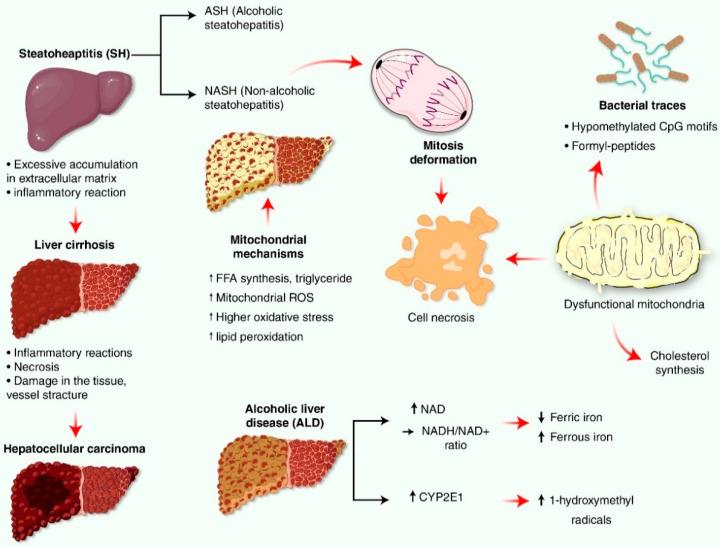Figure 3.
The pathogenesis of NAFLD-related hepatocellular carcinoma is depicted here in the form of a diagram. Steatohepatitis (SH), alcoholic steatohepatitis (ASH), non alcoholic steatohepatitis (NASH), alcoholic liver disease (ALD), free fatty acid (FFA), cytochrome P-450 2E1 (CYP2E1), nicotineamide adenine dinucleotide. NASH disrupt the mitochondrial pathway of the liver, in an increase in FFA flow to the liver, mitochondrial ROS, oxidative stress and lipid peroxidation. Due to the accumulation of severely damaged and dysfunctional mitochondria, deformed mitosis leads to cell death. This is caused by the release of bacterial traces (hypomethylated CpG motifs and formyl-peptides) stored in mitochondria, which can speed up the progression of hepatitis and NASH. The dinucleotide NAD+ raises the ratio of NADH to NAD+, resulting in steatosis. Increased CYP2E1 activities result in increased hydroxyl radicals, which is linked to the development of ALD. ↑, up-regulation; ↓, down-regulation.

